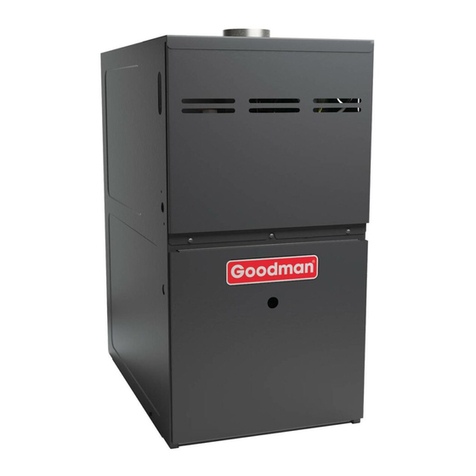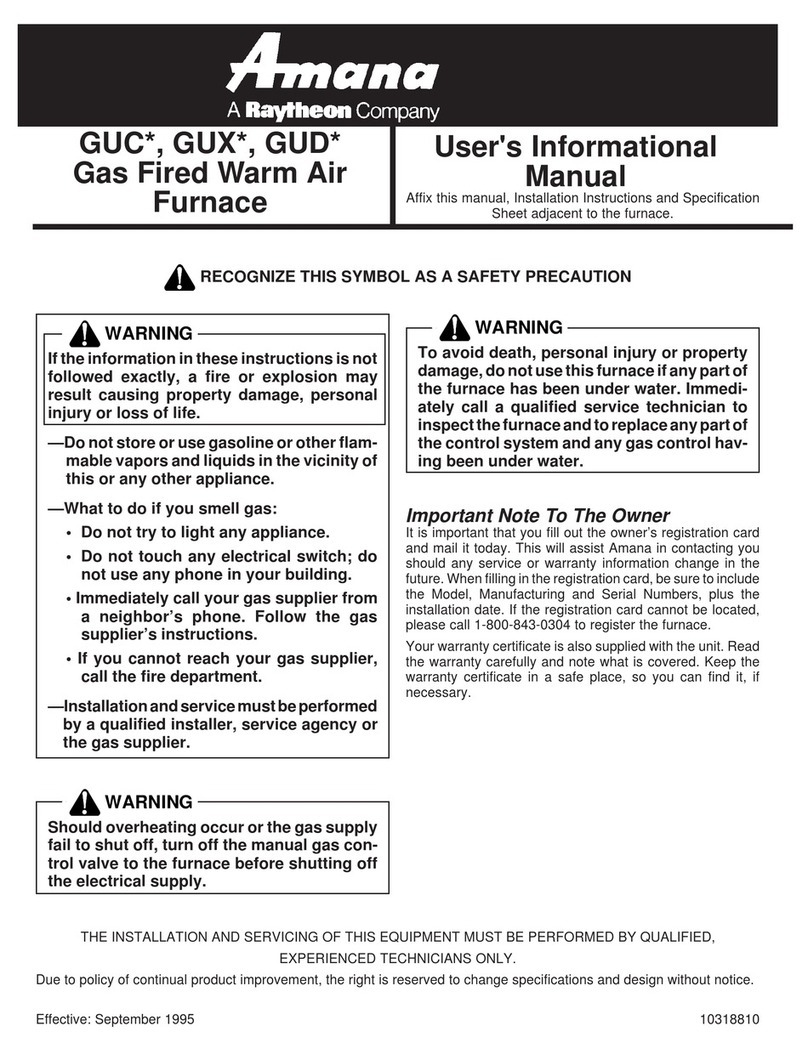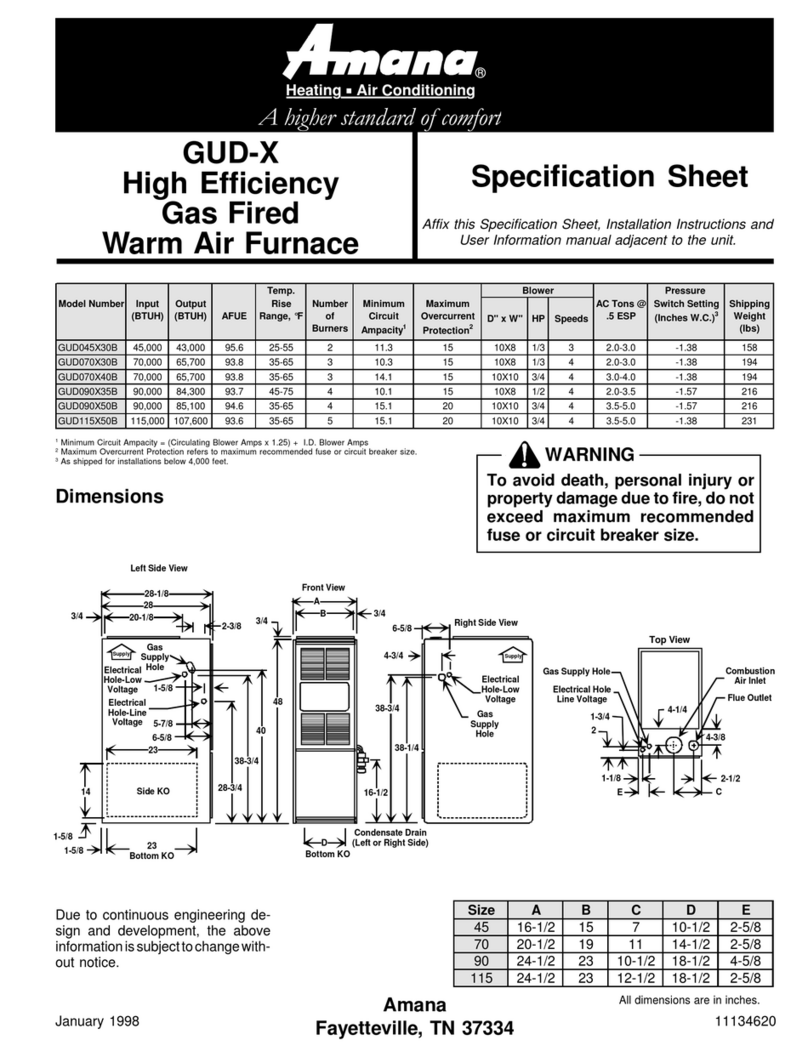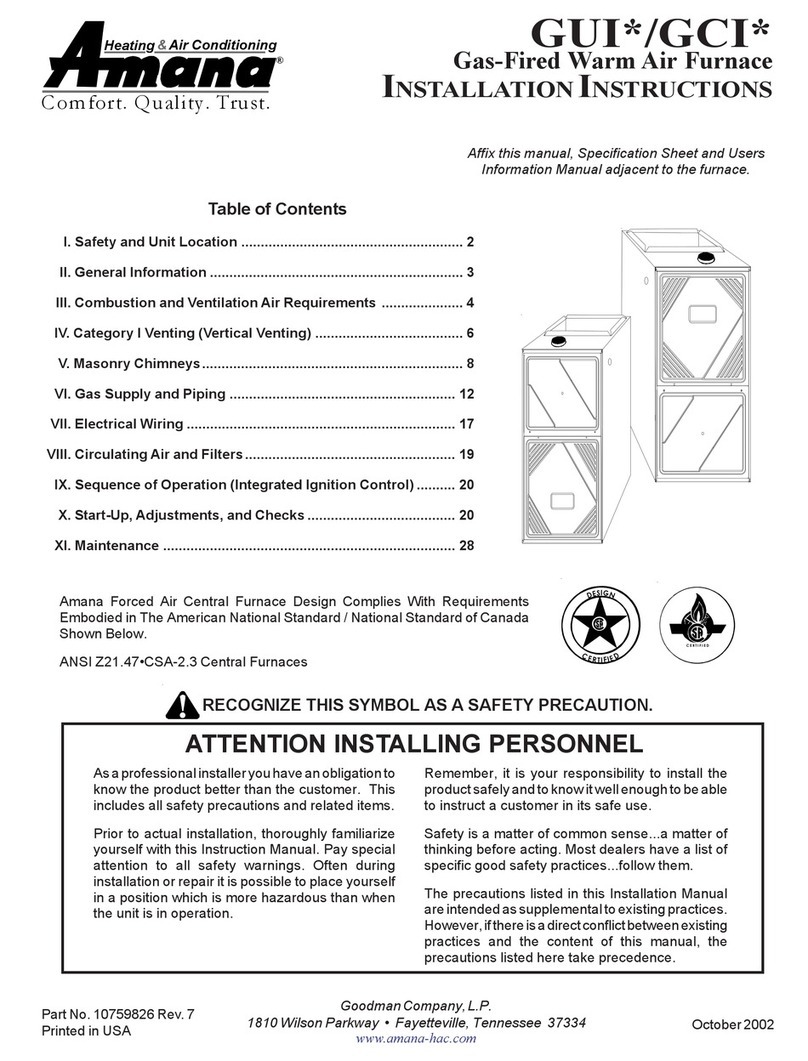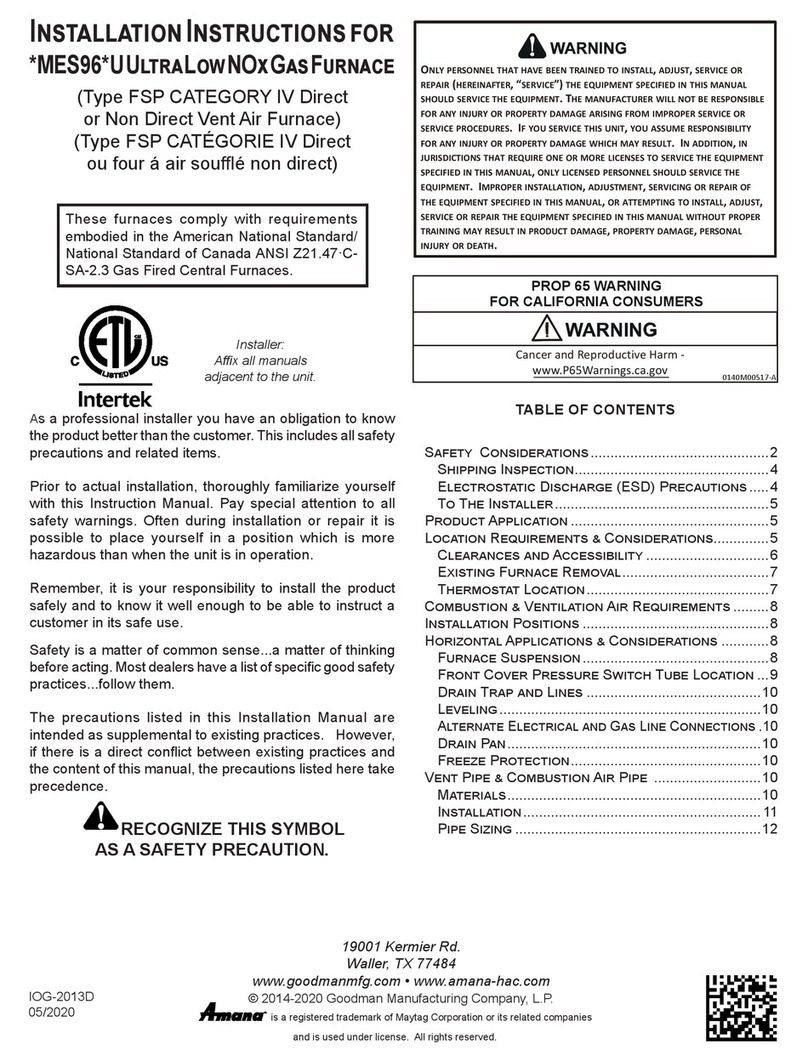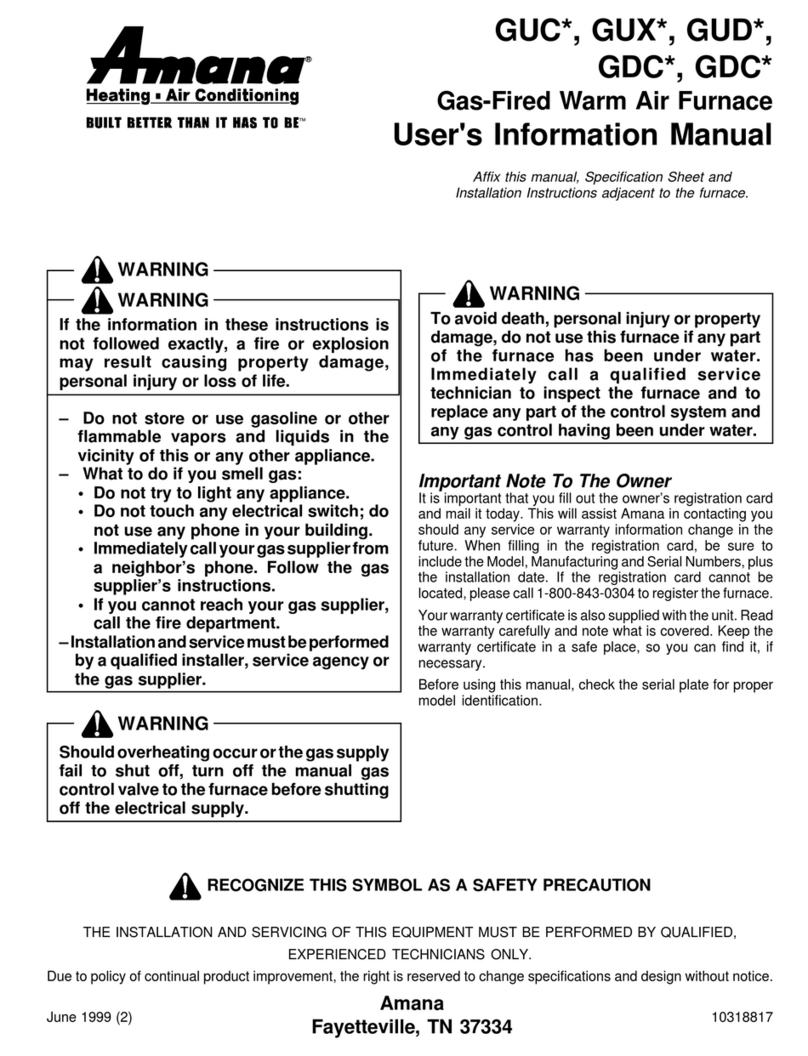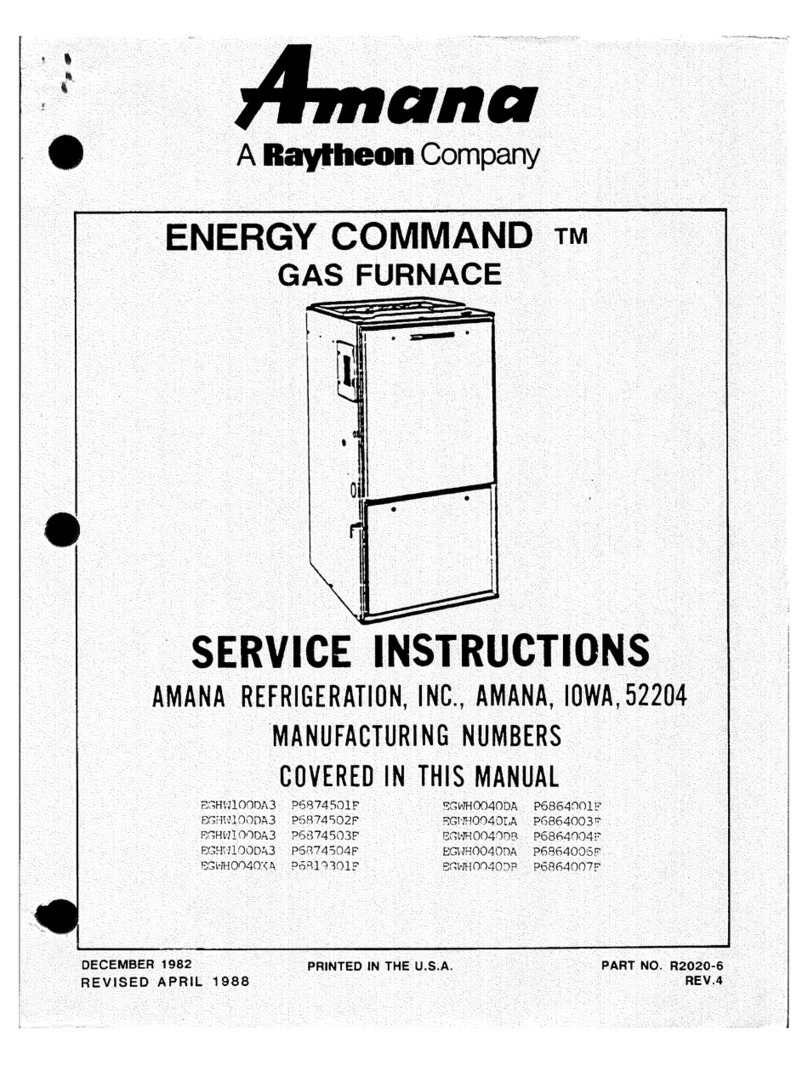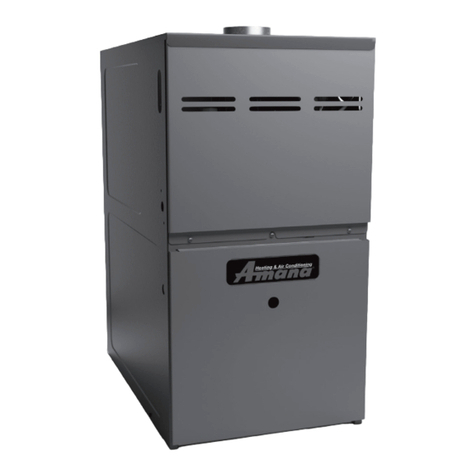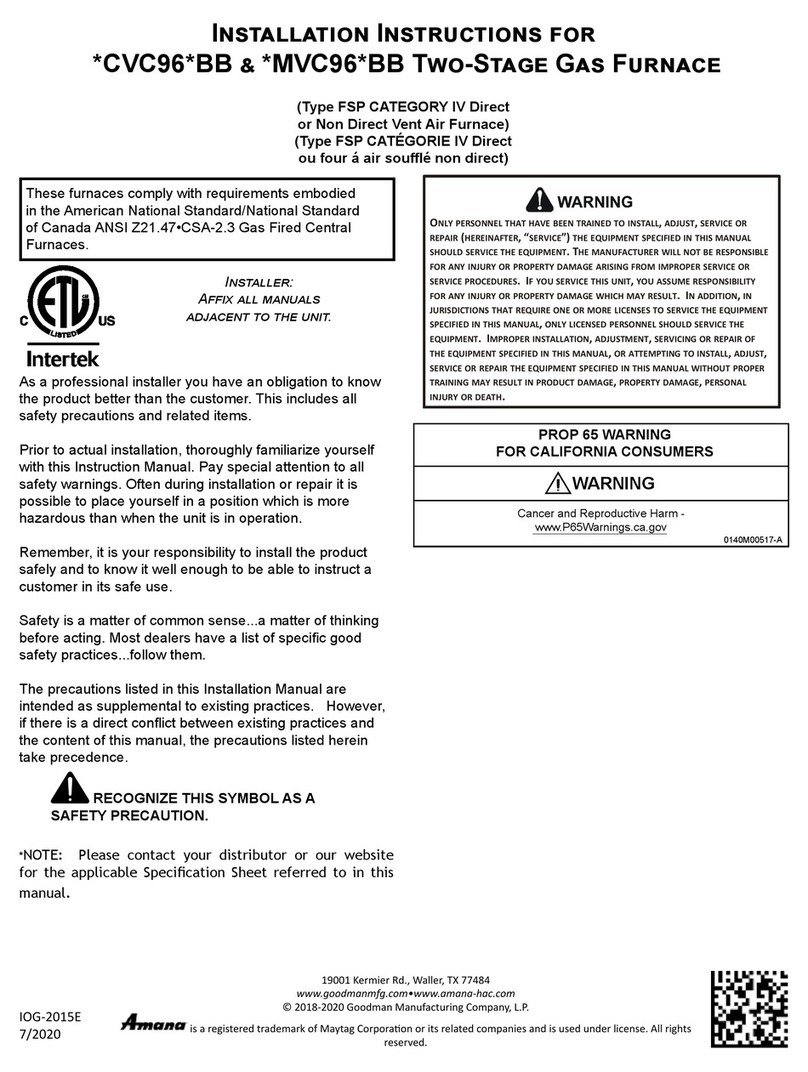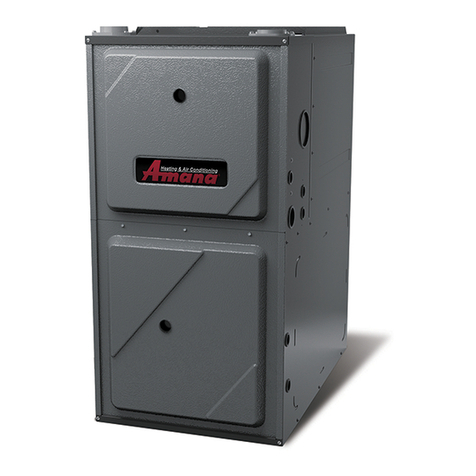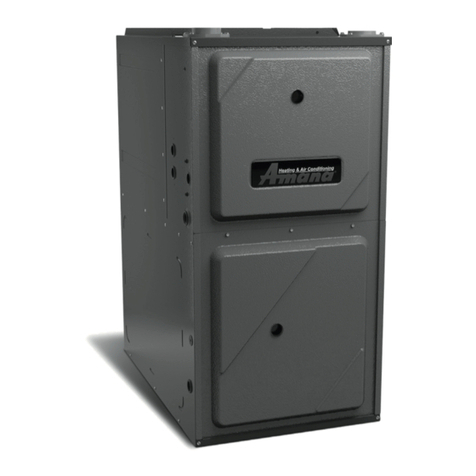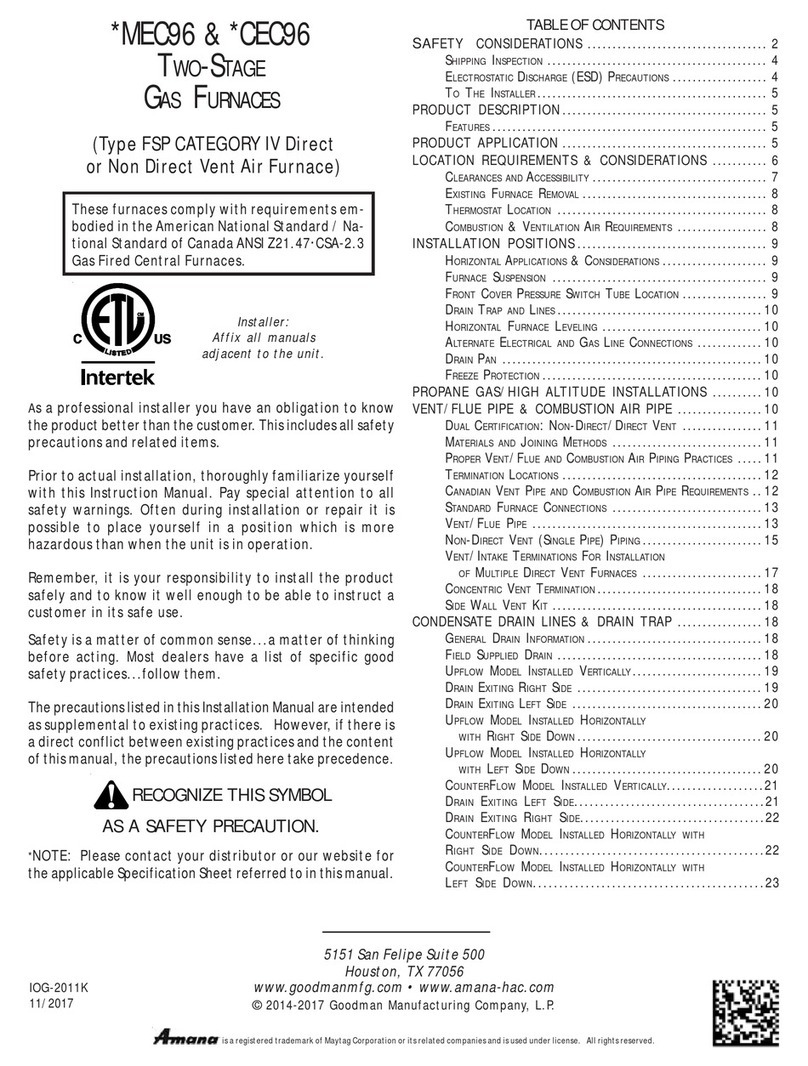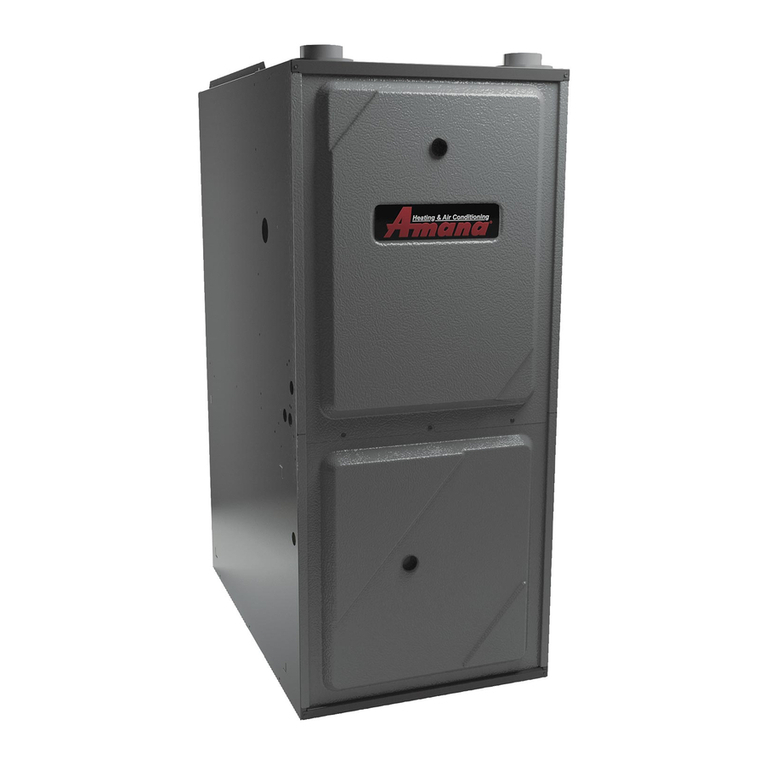
3
• Do not install the furnace where the combustion air
is exposed to the following substances: permanent
wavesolutions,chlorinatedwaxesorcleaners,chlo-
rine based swimming pool chemicals, water soften-
ing chemicals, deicing salts or chemicals, carbon
tetrachloride, halogen type refrigerants, cleaning
solutions(suchasperchloroethylene),printinginks,
paint removers, varnishes, hydrochloric acid, ce-
ments and glues, antistatic fabric softeners for
clothes dryers, and masonry acid washing materi-
als. Ifthefurnaceisinstallednearanareawhichwill
be frequently contaminated by these substances,
the furnace should be sealed from this area so that
little contaminated air can reach the furnace. The
furnace must still have an adequate supply of com-
bustion air, either from a nearby uncontaminated
room or from outdoors. For details, see “AIR RE-
QUIREMENTS” Section III.
• Provisions must be made for venting combustion
productsoutdoorsthroughaproperventingsystem.
The length of flue pipe could be a limiting factor in
locating the furnace.
• When installed horizontally, the furnace must be
installed with the access doors vertical so that the
burners fire horizontally into the heat exchanger.
The unit cannot be installed with the access doors
on top or bottom. (See Specification Sheet)
• Allow clearances from the enclosure as shown on
SpecificationSheetforfireprotection,properopera-
tion,andserviceaccess.Theseclearancesmustbe
permanently maintained. The combustion and ven-
tilatingairopeningsinthefrontandtoppanelsofthe
furnace must never be obstructed.
• This furnace shall not be connected to a chimney
flue serving a separate appliance designed to burn
solid fuel.
• When the furnace is used in connection with a
cooling unit, the furnace must be upstream of, or in
parallelwith,thecoolingunit.FordetailsseeSection
VIlI.
• On Counterflow Installations, the air conditioning
coil must be downstream from the heat exchanger
of the furnace.
•
CounterflowInstallationoveranoncombustiblefloor.
Beforesettingthefurnaceovertheplenumopening,
insure the surface around the opening is smooth
and level. A tight seal should be made between the
furnace base and floor by using a silicone rubber
caulking compound or cement grout.
•
Counterflow Installation over a combustible floor.
If
installation over a combustible floor becomes nec-
essary,useanaccessorysub-baseasshownonthe
SpecificationSheet.Followtheinstructionswiththe
sub-base for proper installation. Do not install the
furnace directly on carpeting, tile, or other combus-
tible material other than wood flooring. (Note: The
sub-base will not be required if an air conditioning
coil is installed between the supply air opening on
the furnace and the floor.)
I. Safety and Unit Location
WARNING
To prevent personal injury or death due
to improper installation, adjustment, al-
teration, service, or, maintenance refer
to this manual or for additional assis-
tance or information consult a qualified
installer, service agency or the gas sup-
plier.
WARNING
This product contains or produces a
chemicalorchemicalswhichmaycause
serious illness or death and which are
knowntotheStateof California tocause
cancer, birth defects or other reproduc-
tive harm.
WARNING
To prevent possible death, personal in-
jury or equipment damage due to fire,
the following points must be observed
when installing the unit.
WARNING
To prevent possible death, personal in-
juryorpropertydamageduetoelectrical
shock, the furnace must be located to
protect the electrical components from
water.
NOTE: This unit must not be used as a “construction
heater” during the finishing phases of construction on a
new structure. This type of use may result in premature
failure of the unit due to extremely low return air tem-
peratures and exposure to corrosive or very dirty atmo-
spheres.
WARNING
To prevent possible death, personal in-
jury or property damage, do not install
this unit in a mobile home, trailer or
recreational vehicle.
Additional Safety Considerations
• This furnace is approved for Category I Venting
only.
• Whenthefurnace is heating,thetemperature ofthe
return air entering the furnace must be between
55°F and 100°F.

